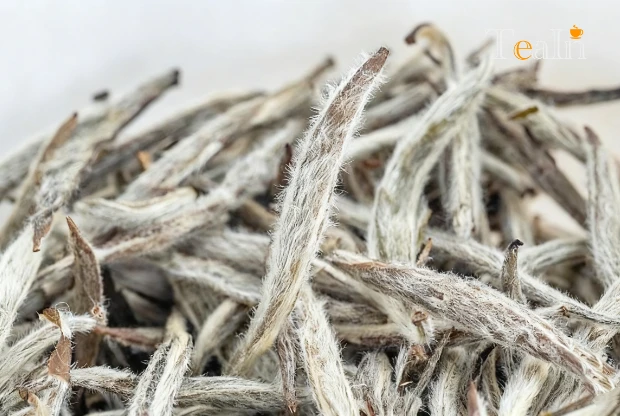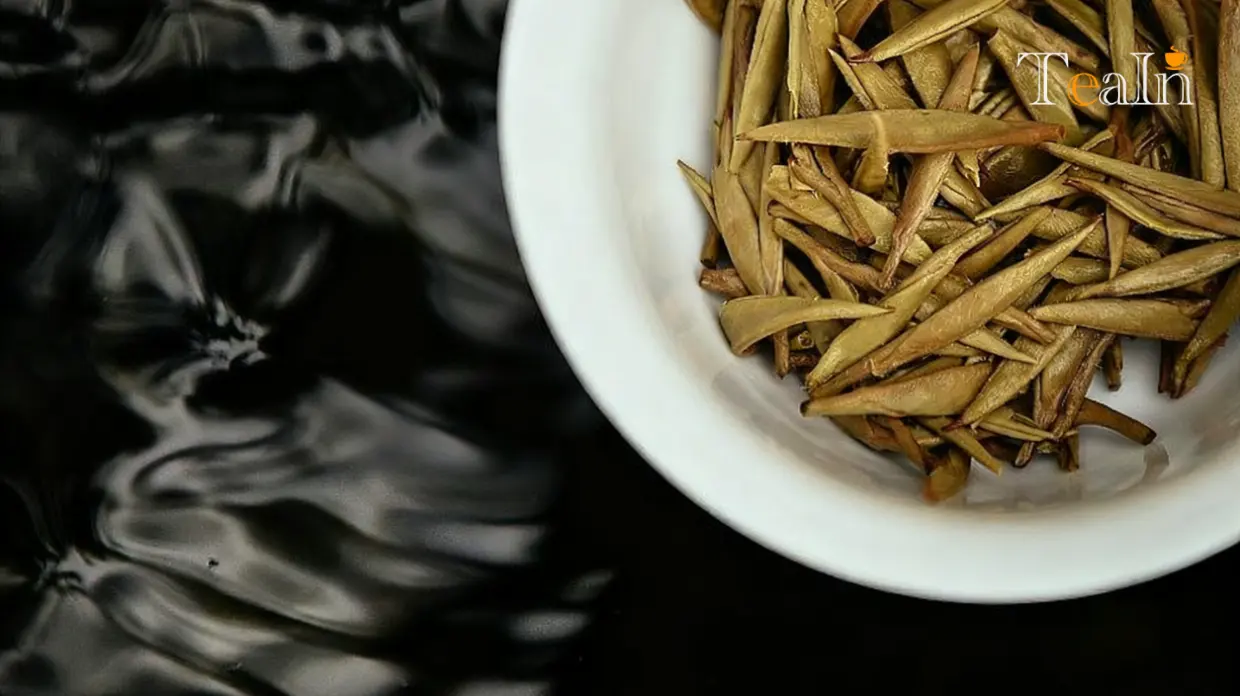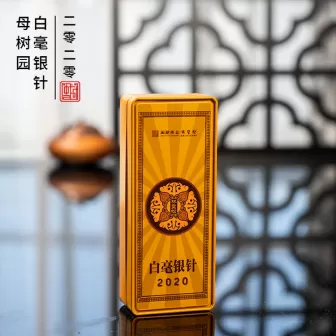Silver Needle White Tea: The Jewel of White Tea, Taste the Freshness of Spring in Every Sip

When talking about white tea, most people think of its mellow elegance. But when it comes to the "treasure" of white tea, Silver Needle White Tea stands out. Known for its unique form of "made from single buds, covered in silvery fine hairs," it’s hailed as the "peak of white tea" and "the beauty of tea." It’s not just an elegant choice among literati and scholars, but also "drinkable spring" in the eyes of seasoned tea lovers. Today, we’ll take you through its origin, raw materials, craftsmanship, and tasting to help you understand this "freshness in a needle."
I. What Is Silver Needle White Tea? The Top-Tier Choice in White Tea
Silver Needle White Tea is the highest-grade variety among the four major white tea categories (Silver Needle, White Peony, Gongmei, Shoumei). It gets its name from its dry form—"straight as needles, covered in silvery fine hairs." Its rarity first comes from its extremely strict raw material selection: it’s made exclusively from the plump, tender single buds of tea trees, with no leaves at all. Each bud must be full, plump, and free from insect damage. It takes over 10,000 buds to make one jin (500g) of Silver Needle White Tea, and its output accounts for only about 5% of total white tea production—truly a "premium pick from a pile of buds."
Historically, records of Silver Needle White Tea date back to the Qing Dynasty, when it was mainly presented as a tribute to the imperial family and rarely seen among ordinary people. Today, it’s not only a national geographical indication product of China but also a "health treasure" sought after by tea lovers at home and abroad for its "high amino acid, low caffeine" traits. There’s even a saying that "a tael of Silver Needle is as valuable as a tael of gold," which speaks to its great rarity.

II. Core Origin: The "Natural Greenhouse" of Mount Taimu
Half of Silver Needle White Tea’s quality lies in its origin. Currently, there are two core production areas in China: Fuding and Zhenghe in Fujian Province. Among them, Silver Needle White Tea from the Mount Taimu area in Fuding is the most representative, thanks to its unique natural conditions that "guard" its quality.
Mount Taimu is located at the "golden latitude zone for high-quality tea globally" (26°N). The geographical pattern where mountains meet the sea keeps tea gardens shrouded in warm mist year-round. The mist weakens direct strong sunlight, allowing tea buds to accumulate nutrients slowly. At the same time, the moist air currents brought by sea breezes (with an average annual humidity of 78%) keep the buds full and juicy, preventing them from becoming fibrous.
The soil also plays a key role: most tea gardens here have red soil and yellow soil, with deep layers rich in minerals (such as selenium and zinc). Tea tree roots can penetrate deep into the soil to absorb nutrients, making the buds not only plump but also naturally infused with a faint "high-mountain freshness." Compared to other production areas, Fuding Silver Needle White Tea generally has 10%-15% higher amino acid content—which is the core source of its "fresh and smooth taste."
III. Raw Materials: Careful Selection at Every Step
To make high-quality Silver Needle White Tea, the first step is to "choose the right buds," which follows two "strict standards":
1. Variety: Only Two National-Grade Fine Varieties
Silver Needle White Tea uses only two national-grade fine tea varieties as raw materials: Fuding Dabai Tea and Fuding Dahao Tea (with official designations "Huacha 1" and "Huacha 2" respectively). The buds of these two varieties are naturally "excellent":
- Fuding Dabai Tea: Plump buds with dense silvery fine hairs and high amino acid content, producing Silver Needle with a strong fine hair aroma.
- Fuding Dahao Tea: Buds larger than those of Fuding Dabai Tea, with thicker silvery hairs, more prominent aroma, and richer taste.
Buds from other tea varieties are either too small or have sparse silvery hairs, failing to meet the "appearance" and "taste" standards of Silver Needle White Tea.
2. Harvesting: The Iron Rules of "Early, Tender, Clean"
Harvesting must be "early": every year, from before Qingming Festival to before Grain Rain Festival, the first batch of newly sprouted buds is the most tender. At this time, temperatures are low, buds grow slowly, and accumulate sufficient nutrients—this is the "golden harvest period." After Grain Rain, temperatures rise, buds tend to age, silvery hairs decrease, and the taste becomes astringent.
The harvesting standard is even stricter: only single buds without leaves or stems are acceptable. The buds must be "plump, short, and strong," about 2-3 cm in length, shaped like "silver shuttles." If a bud is too thin, too long, or has even a small leaf attached, it can only be downgraded to raw material for White Peony. Tea farmers follow what’s known as the "ten no-pick rules": no picking on rainy days, no picking when dew is still on the buds, no picking thin buds, etc.—a testament to how strict the selection is.
VI. Craftsmanship: Slow Work Behind Minimalism
The craftsmanship of Silver Needle White Tea can be described as "subtraction"—no stir-frying, no rolling, only two steps: "natural withering" and "slow drying over gentle fire." But these two steps require "extreme patience."
1. Natural Withering: Let the Buds "Breathe Slowly"
Freshly picked buds have a water content of about 75% and need to be spread on well-ventilated bamboo mats for "withering." Importantly, this is not sun exposure; instead, the buds are placed in a well-ventilated withering room with scattered light and gentle wind to allow moisture to evaporate slowly. This process usually lasts 24-48 hours.
Why "slow"? Rapid dehydration would cause the loss of amino acids, tea polyphenols, and other nutrients in the buds, and also lead to the shedding of silvery hairs. Slow withering allows moisture in the buds to evaporate evenly, while also triggering mild enzymatic reactions to soften the aroma and enhance the fresh taste. Tea farmers turn the buds regularly to ensure each one "breathes evenly" and avoids dampness or mold.
2. Slow Drying Over Gentle Fire: Lock in the Last Bit of "Freshness"
When the water content of the buds drops to about 20%, the "drying" process begins—slow roasting over a 30-40°C gentle fire for 6-8 hours, until the water content falls below 5%. The temperature is crucial: too high will burn the buds and ruin the aroma; too low will result in incomplete drying, making the tea prone to spoilage.
During slow roasting, volatile aromatic substances (such as linalool and geraniol) in the buds are released slowly, creating the unique "fine hair aroma." At the same time, low-temperature drying maximizes the retention of amino acids (especially theanine) in the buds—which is the key to Silver Needle White Tea’s "fresh, sweet, and smooth taste." Throughout the entire craftsmanship, there are no artificial additives; quality is entirely shaped by nature and time.
V. Quality Code: Threefold Excellence in Form, Aroma, and Taste
High-quality Silver Needle White Tea can be identified at a glance, with a single smell, or a single sip. Its "uniqueness" lies in three details:
1. Check Its Form: "Silvery, Straight as Needles"
In dry form, the buds are silvery white or grayish white, covered in dense silvery fine hairs, like wrapped in a layer of "silver frost." In shape, they should be "straight and not bent," with uniform length (about 2-3 cm), no broken buds, no yellow leaves. Held in the hand, they feel light but carry a "heavy" texture. If the buds are bent or have sparse silvery hairs, the raw materials or craftsmanship are likely subpar.
After brewing, the buds "stand up" in the water, like small silver needles standing at the bottom of the cup. They unfold slowly (but don’t fall apart, as they are single buds). The liquor is pale apricot-yellow, clear and bright, with fine silvery hairs clinging to the cup wall—this is called "hairy liquor," a sign of high-quality Silver Needle.
2. Smell Its Aroma: "Fine Hair Aroma as the Core, Honey-Like Sweetness as a Complement"
The aroma of Silver Needle White Tea is "clean," centered on "fine hair aroma"—a fresh scent similar to "fresh reeds" or "grass after rain" emitted by the silvery fine hairs on the buds, with a faint sweetness. A closer smell reveals "honey-like sweetness," like freshly picked flower nectar—not strong or showy, but long-lasting.
Aged Silver Needle White Tea (over 3 years old) has a "deeper" aroma: the fine hair aroma gradually transforms into "jujube aroma" and "herbal aroma," but it never loses its freshness. Instead, it gains a layer of mellow depth—distinguishing it from the "strong herbal aroma" of aged Shoumei.
3. Taste Its Flavor: "Fresh, Sweet, and Smooth, Like Drinking Morning Dew"
The first sensation when sipping is "freshness"—brought by amino acids, like drinking a sip of freshly squeezed sugarcane juice but more refreshing. Next comes "sweetness," not the sweetness of sugar, but the "mellowness" of the buds themselves, spreading slowly on the tongue, without astringency or bitterness. After swallowing, there’s a "returning sweetness" in the throat, like holding a mint candy—cool and comfortable, with a long aftertaste.
This "fresh and smooth sensation" is unique to Silver Needle White Tea: cleaner than White Peony, sweeter than Shoumei, with no impurities—like capturing the "freshness of spring" in a cup.
IV. Proper Tasting: Don’t Waste Good Silver Needle with Wrong Brewing
Silver Needle White Tea is delicate; improper brewing can easily "waste" its freshness. Remember these 4 key points to enjoy its best flavor:
1. Choose the Right Utensils: Highlight "Shape Viewing" and "Aroma Smelling"
Glass: Perfect for beginners, as it allows you to clearly see the buds "standing up" and enjoy the beauty of "silver needles standing in the cup."
White porcelain gaiwan (lidded bowl): Suitable for advanced tea lovers. The gaiwan has good heat retention, which better releases the fine hair aroma, and doesn’t absorb flavors, ensuring the pure taste of the tea liquor.
Avoid purple clay teapots (which absorb aroma) and thermoses (which over-steep the tea and cause astringency).
2. Control Water Temperature: 80-85°C, No Boiling Water
Silver Needle buds are tender; boiling water will destroy their amino acids and aromatic substances, leading to astringent tea liquor. It’s best to use "warm water cooled to 80-85°C"—boil the water, then let it cool for 2-3 minutes until the cup wall is warm but not scalding.
3. Tea Amount and Infusion Speed: "Less Tea, Quick Infusion"
You don’t need much tea—3-5 grams (about a small handful) with 150ml of water, following a 1:30 tea-to-water ratio. This highlights the "fresh and smooth sensation" without making the tea too strong.
Infuse quickly: Pour out the liquor after 10-15 seconds for the first infusion, then increase the time by 5-10 seconds for each subsequent infusion (e.g., 20 seconds for the second, 25 seconds for the third). The flavor will gradually fade after 5-6 infusions—high-quality Silver Needle can be infused 6-8 times, with returning sweetness still present in the later infusions.
4. Tasting Steps: "First View, Then Smell, Finally Taste"
View: First look at the dry tea shape, then observe the "standing" buds and liquor color after brewing.
Smell: First smell the dry tea aroma (fine hair aroma), then the lid aroma (honey-like sweetness), and finally the cup base aroma (returning sweetness aroma).
Taste: Take small sips, let the tea liquor swirl on your tongue to feel the freshness, then swallow slowly to experience the returning sweetness—don’t gulp it down, or you’ll miss many details.
IIV. Collection Value: The "Silver Needle Treasure" That "Grows More Fragrant with Age"
Many people think Silver Needle White Tea can only be drunk as new tea, but in fact, it has great collection value. Because it’s made from single buds with abundant nutrients, it develops richer flavors during aging. With its low output, it becomes more precious as it’s stored.
New Silver Needle (less than 1 year old) has a slightly cool nature, suitable for summer drinking to relieve heat. After 3 years of aging, its nature turns from cool to warm, gentler on the stomach. Simmer it in a teapot for 5 minutes in winter, and it will have a strong jujube or herbal aroma—warm and comforting. Aged Silver Needle over 7 years old is "hard to come by"; it not only has a mellow taste but also carries "the flavor of time," doubling its collection value.
When collecting, remember the "four key precautions": keep it dry (humidity 40%-60%), away from light (avoid direct sunlight to prevent silvery hair loss), sealed (use ceramic jars or aluminum foil bags to avoid odor absorption), and free from odors (keep away from kitchens, perfumes, etc.). With proper storage, Silver Needle White Tea can be kept for over a decade, growing more fragrant with time.
Conclusion: A Cup of Silver Needle Holds the Tenderness of Nature and Craftsmanship
The rarity of Silver Needle White Tea never comes from its "price"—it’s shaped by the mist of Mount Taimu, the hard work of tea farmers harvesting at dawn, and the patience of craftsmen during slow withering. It’s not as bold as green tea or as rich as black tea, but with its "fresh, pure, mellow, and smooth" traits, it becomes a "gentle presence" on the tea table.
If you’re trying white tea for the first time, start with Silver Needle White Tea—it will let you understand that the best tea is never "complicated," but "natural": a single sip makes you feel like standing in a spring tea garden, with fresh wind, green grass, and time slowing down.




